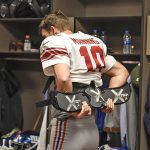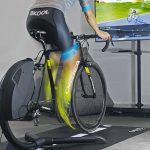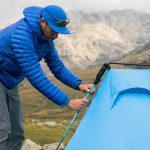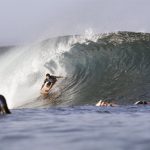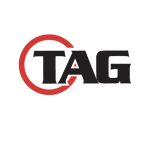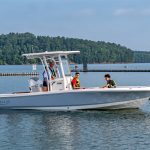Overall sales for the entire winter sports market increased by 4.6 percent in dollars to $2.03 billion compared to $1.94 billion in 2002 for the period of August through February, according to the SnowSports Industries America (SIA) Retail Audit.
“This season is comparable to the 2000/01 season where sales were $2.06 billion through February,” said Julie Lynch, Director of Market Research for SIA, the not-for-profit industry trade group that represents manufacturers and distributors of snow sports products. The SIA Retail Audit tracks and reports sales in all snow sports product categories. This is the fifth of six reports that will look at sales through March 31, 2003, through the end of the winter season.
Sales at specialty ski and snowboard shops for August through the end of February were up 7.8 percent compared to last season. In dollars, that translates to $1.59 billion in sales compared to $1.48 billion in 2002 and $1.56 billion in 2001. Unit sales were up significantly from last season tracking 16.3 percent ahead. For the month of February, specialty store sales increased 7 percent to $272.4 million from $254.5 million in 2002.
As a result of increased sales in specialty stores, inventories are starting to be depleted. Jim Spring of Leisure Trends Group stated, “As we head into March, inventories are already down over 33 percent from the end of February 2002.”
All equipment (alpine, snowboard and Nordic) in specialty stores was flat (-.04%), tracking at $621.3 million compared to $623.6 in 2002. Alpine equipment (including skis, boots, bindings and poles) increased 1.1 percent to $421.7 million as compared to $417.2 last year. Units for alpine equipment tracked ahead 4.1 percent. Snowboard equipment (including boards, boots and bindings) was down, 5.3 percent to $171 million.
Sales for snowboard equipment in 2001 tracked at $180.5 million. Nordic equipment (including skis, boots, bindings and poles) tracked at $28.6 million.
Apparel and accessories lead the way with the largest gains in specialty stores up 6.8 percent to $441.2 million and 20.2 percent to $528.6 million, respectively. Last season, sales for apparel were $413.1 million while accessories were $439.9 million.
Higher Priced Boots were Hot in February
Alpine ski sales were down 6.3 percent to $139.9 million, excluding ski/binding systems. Midfat skis, representing almost 50 percent of alpine skis sold, tracked even in dollars compared to last season. The second largest class, junior skis, is up 33 percent in units. Even though fat and twin tip skis are selling under 20,000 units, both have done very well this season. Unit sales have increased 156 percent and 47 percent, respectively. Ski/binding system sales are ahead 48 percent in dollars and 72.3 percent in units. The surge in unit sales can be explained by the decrease in the average retail price for ski/binding systems which is $618 this season compared to $718 in 2002.
Through February 2003, alpine boot sales were up 2.2 percent in dollars to $161.9 million compared to last season. Expensive boots on sale surged in February. Overall, the average retail price was $283 compared to the average of last season at $258. The gains are in high performance, the largest category, (up 17 percent in dollars), recreation (up 23 percent in dollars), soft boots (up 126 percent in dollars) and juniors (up 32 percent in dollars).
Binding sales are down 12 percent in dollars to $55.7 million excluding ski/binding systems. However, when you add system sales to bindings sold independently, sales are on par with last year through the same period. Poles vaulted ahead 13.4 percent in sales to $13.9 million.
Boards, boots, and bindings all tracked behind last season in dollars. Snowboard sales were down 7.1 percent to $79.4 million. Snowboard boot sales were down 2.7 percent ($51.7 million) and snowboard bindings were down 4.9 percent ($39.9 million). End of the season sales did not help push snowboard equipment sales ahead. The only good news in snowboard equipment is the increases in non step-in bindings (up 2.3 percent in dollars) and boots (up 9.3 percent in dollars).
Junior Apparel Stays Strong
Apparel tops were tracking 10.4 percent ahead of last season in dollars to $245.4 million. Insulated parkas
(mens, womens and juniors) posted a 28.2 percent increase in dollars while soft shell parkas gained 88.3 percent in dollars. Sweaters also stayed hot through February tracking 33.4 percent ahead of 2002 sales. Junior apparel is staying strong through the end of the season with insulated parkas and shell parkas both making significant gains, up 29.5 percent and 200 percent in dollars, respectively.
Bottoms were also up 7.0 percent in dollars to $98.1 million. Softshell pants are selling for an average of $156 and are ahead 57.7 percent in units. This season softshell tops are outselling bottoms by a factor of seven to one. Insulated pants (up 49.6 percent in dollars) and juniors (up 23.8 percent in dollars) have made double digit gains this season.
Snowboard apparel was slightly down 3.6 percent to $79 million. According to Spring, “The past continues to haunt snowboard apparel when comparing overall sales from this season to 2002. The category is off in units and dollars because carry-over has all but disappeared.” To sum up the snowboard apparel category, more snowboard bottoms are being sold this season than tops. Men are buying three times more bottoms then women and twice as many tops. Junior tops and bottoms are both increasing in the double digits.
Accessories Sales are Back to Normal After a Soft 2002
After a rough season last year, equipment accessories were up 14.8 percent to $256.7 million. The hot equipment accessories this season were sunglasses (up 43.6 percent in dollars), helmets (up 29.1 percent in dollars) and auto racks (up 9.4 percent). Snowshoes, after a long run of gains, have slipped 3.7 percent in units.
Apparel accessories were even farther ahead, up 25.8 percent to $271.9 million. All categories made substantial gains; however, base layers (up 29.3 percent in dollars), turtlenecks (up 36.4 percent in dollars) and headwear (up 39.8 percent in dollars) saw the largest gains.
Accessories categories are seeing substantial gains this season due to a soft market during the 2001/2002 season where there was lots of unsold inventory at the end of the season. This season the accessories sales and inventory levels are back to normal levels.

